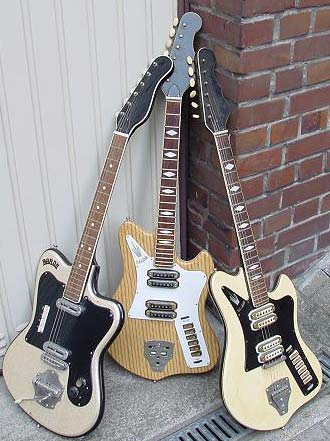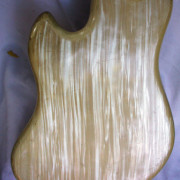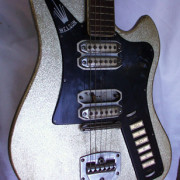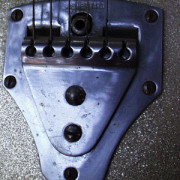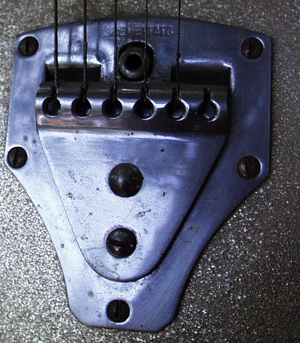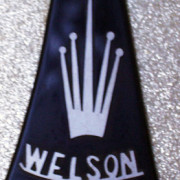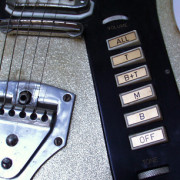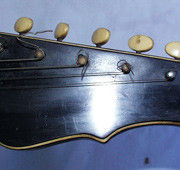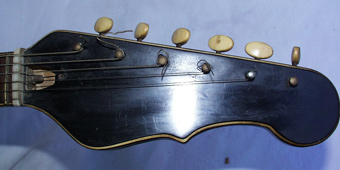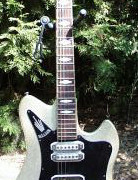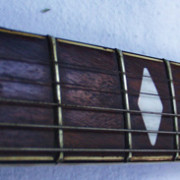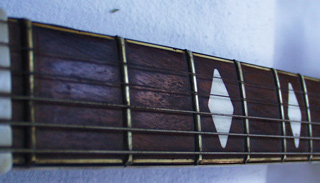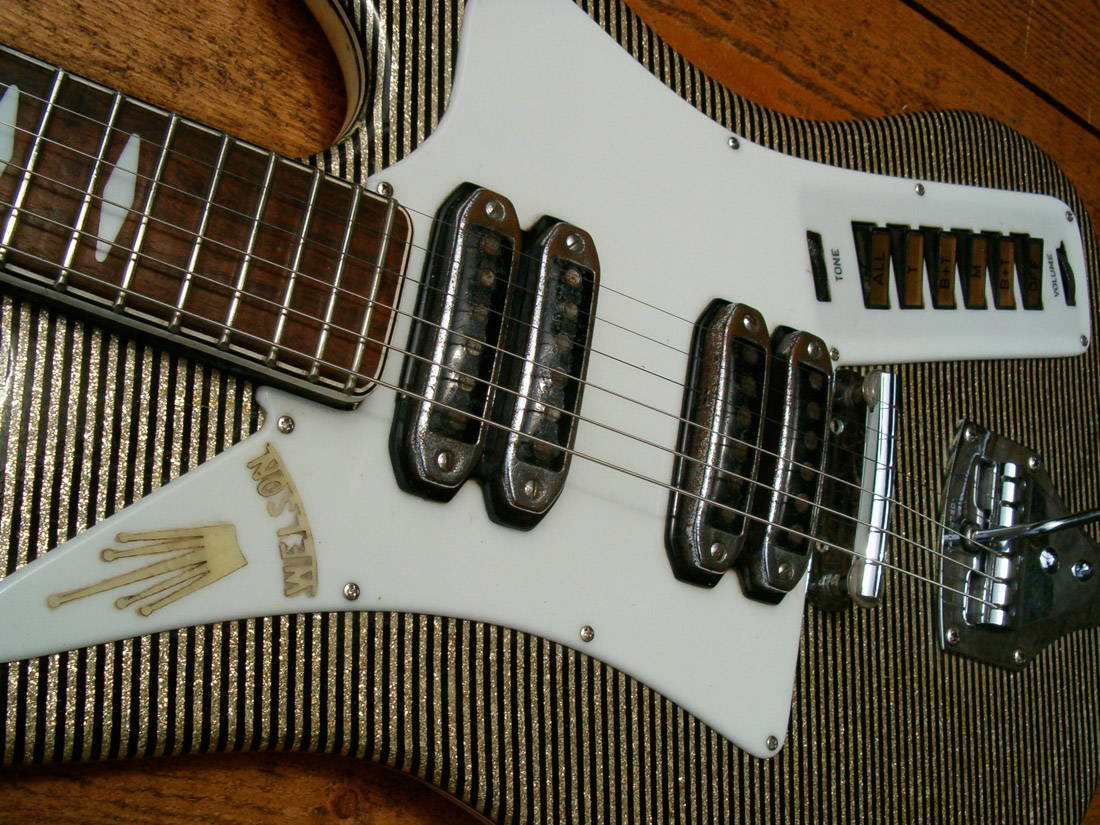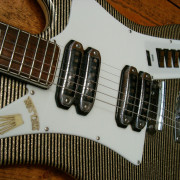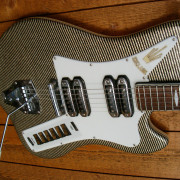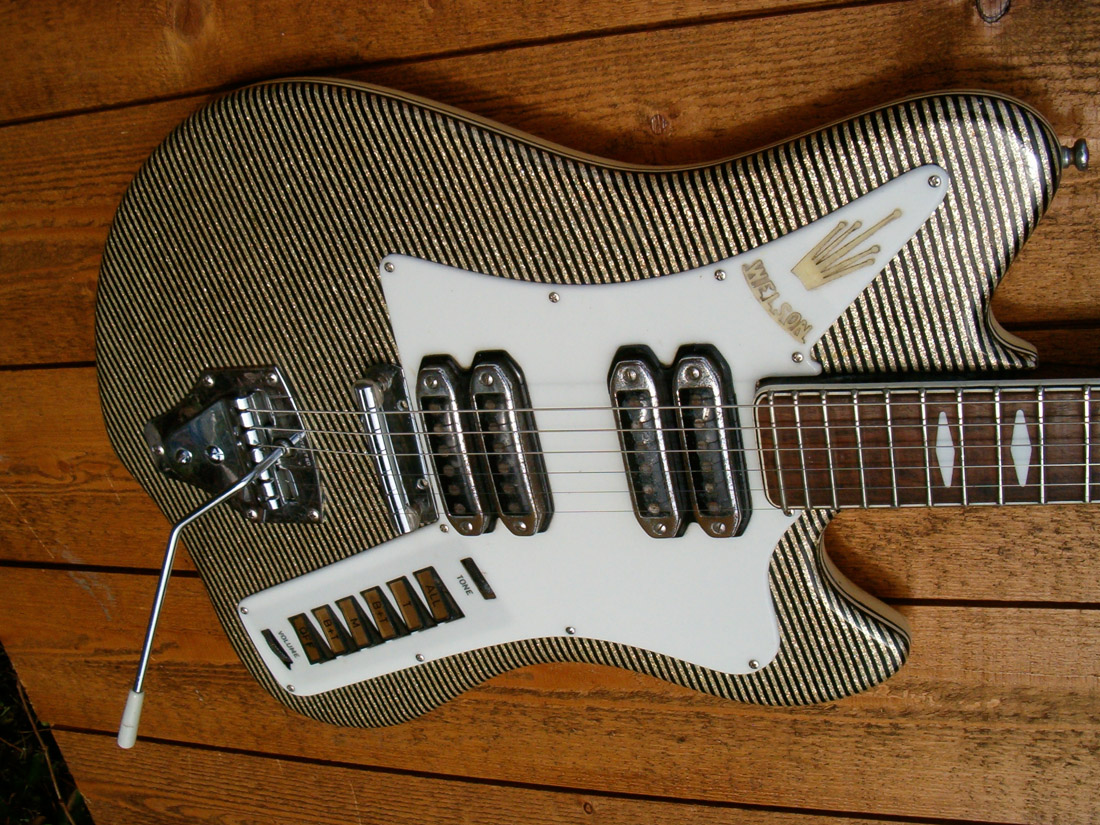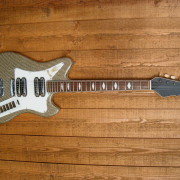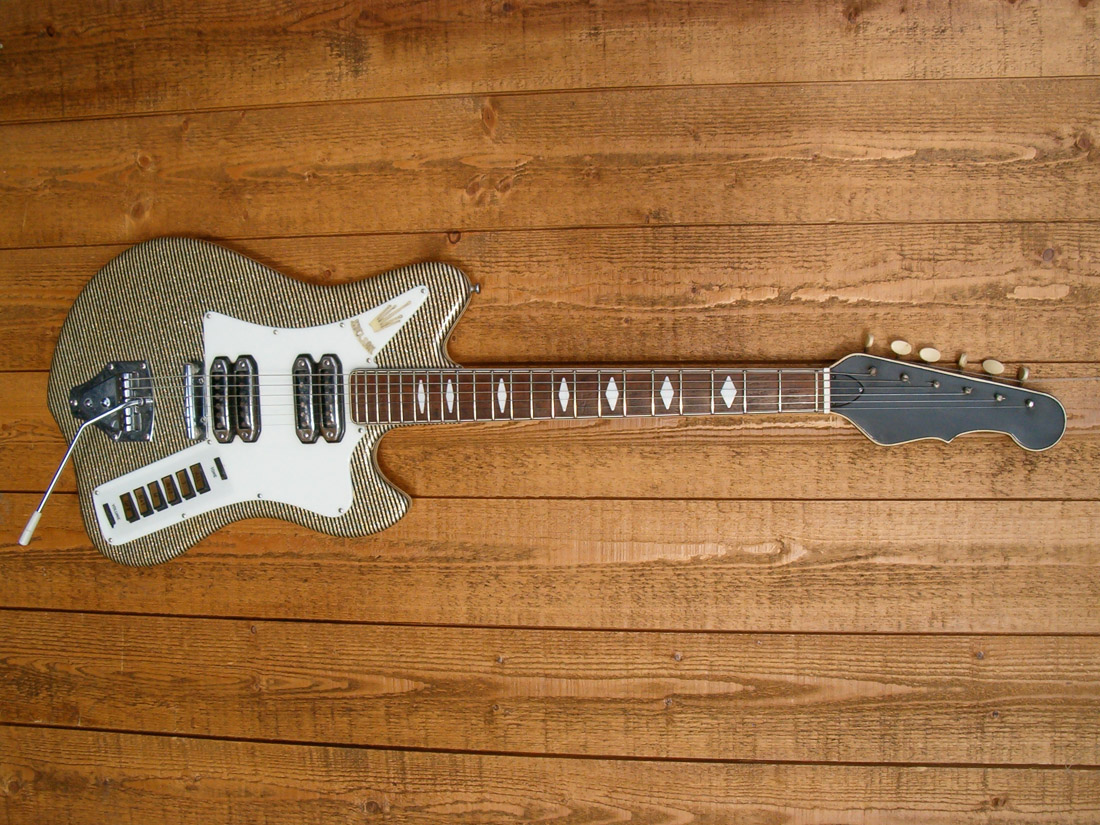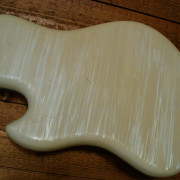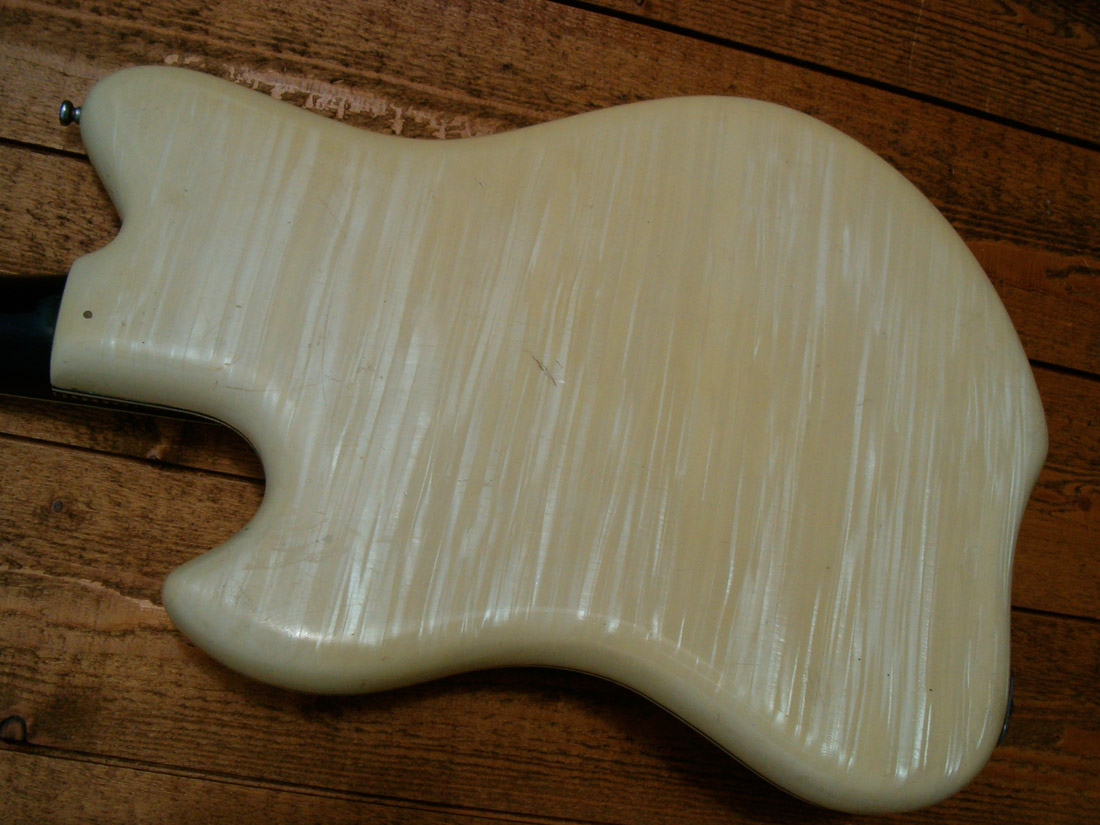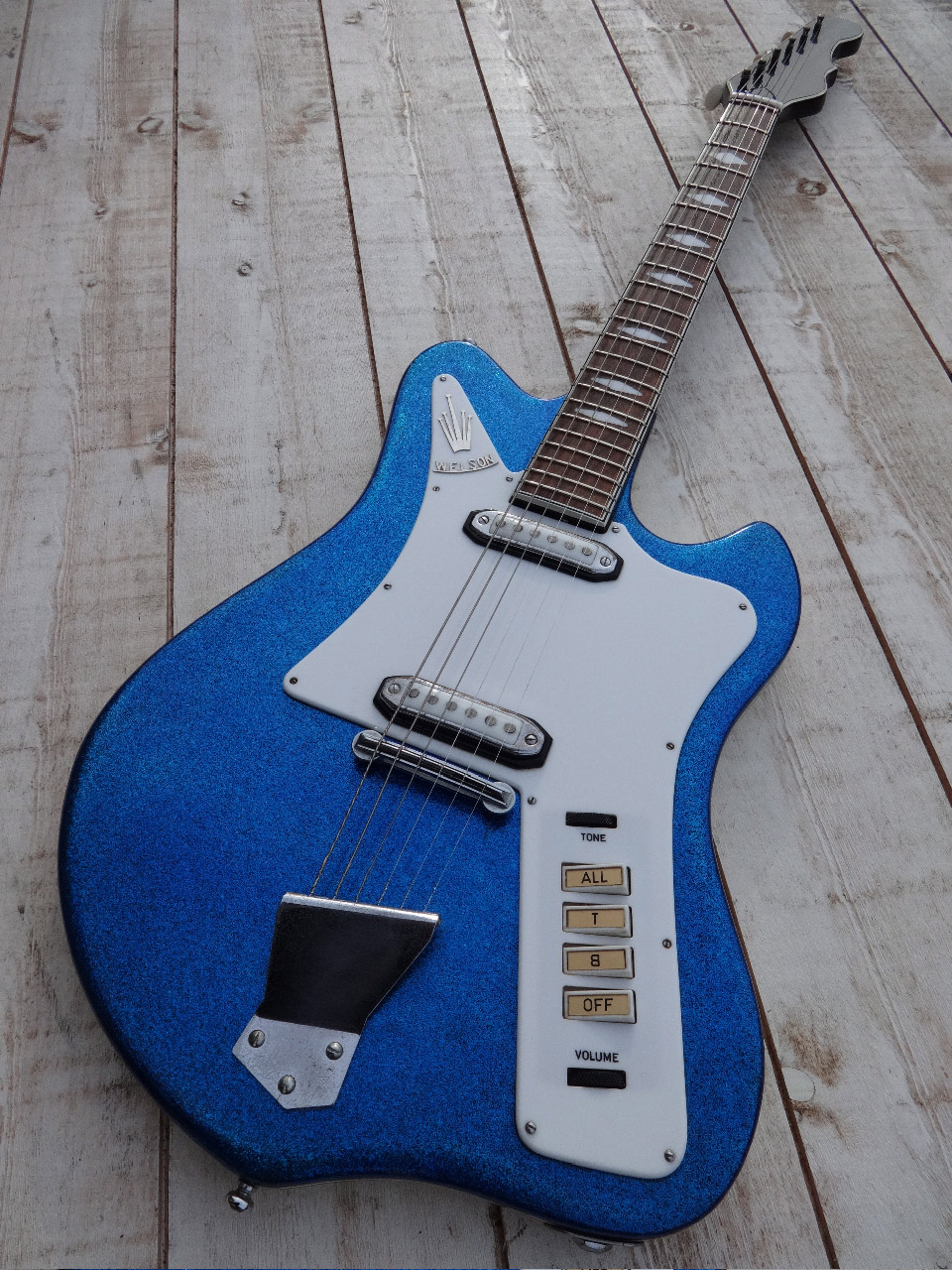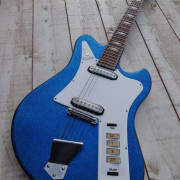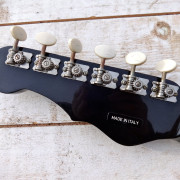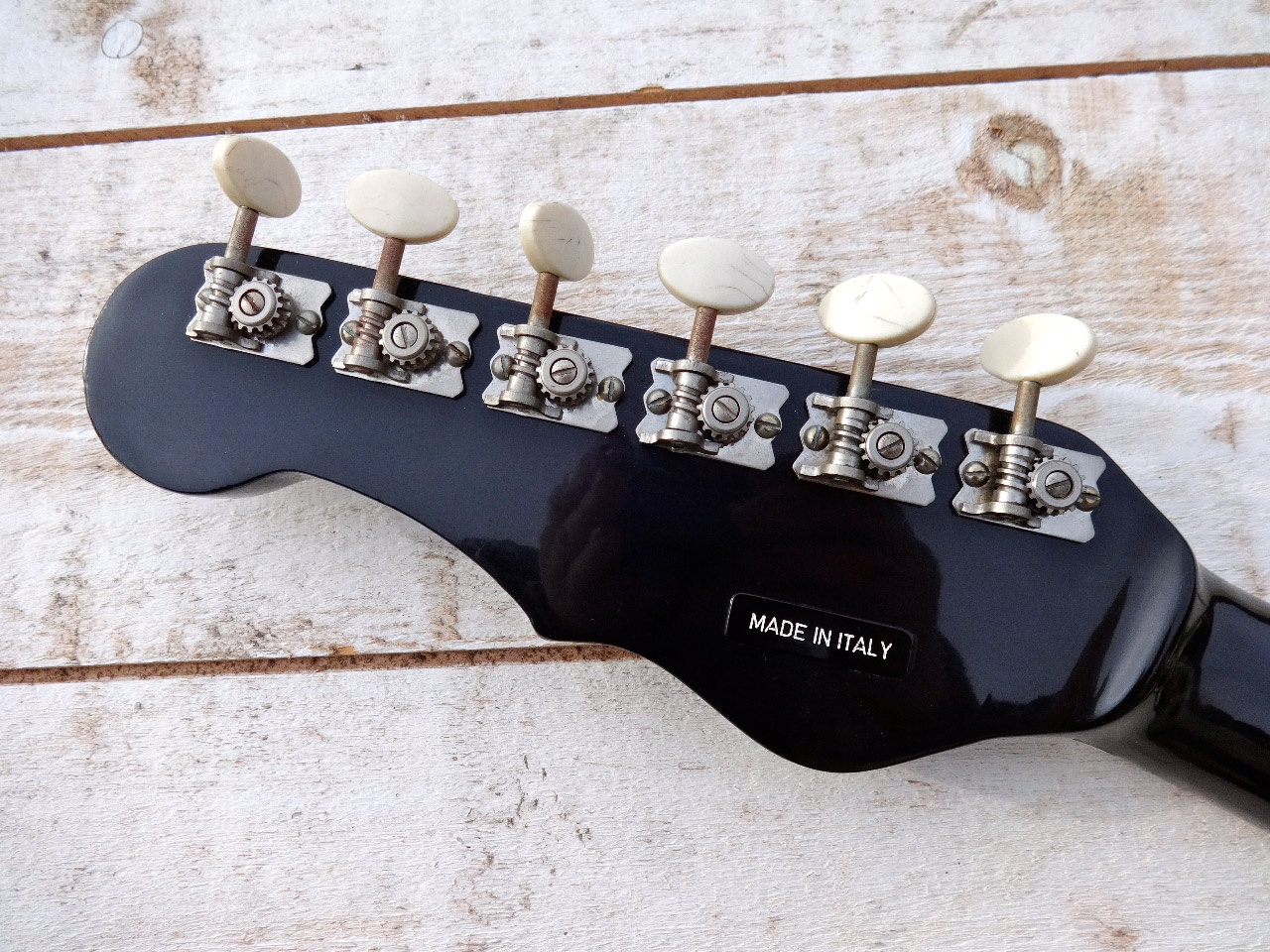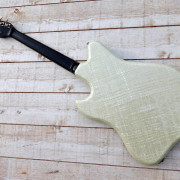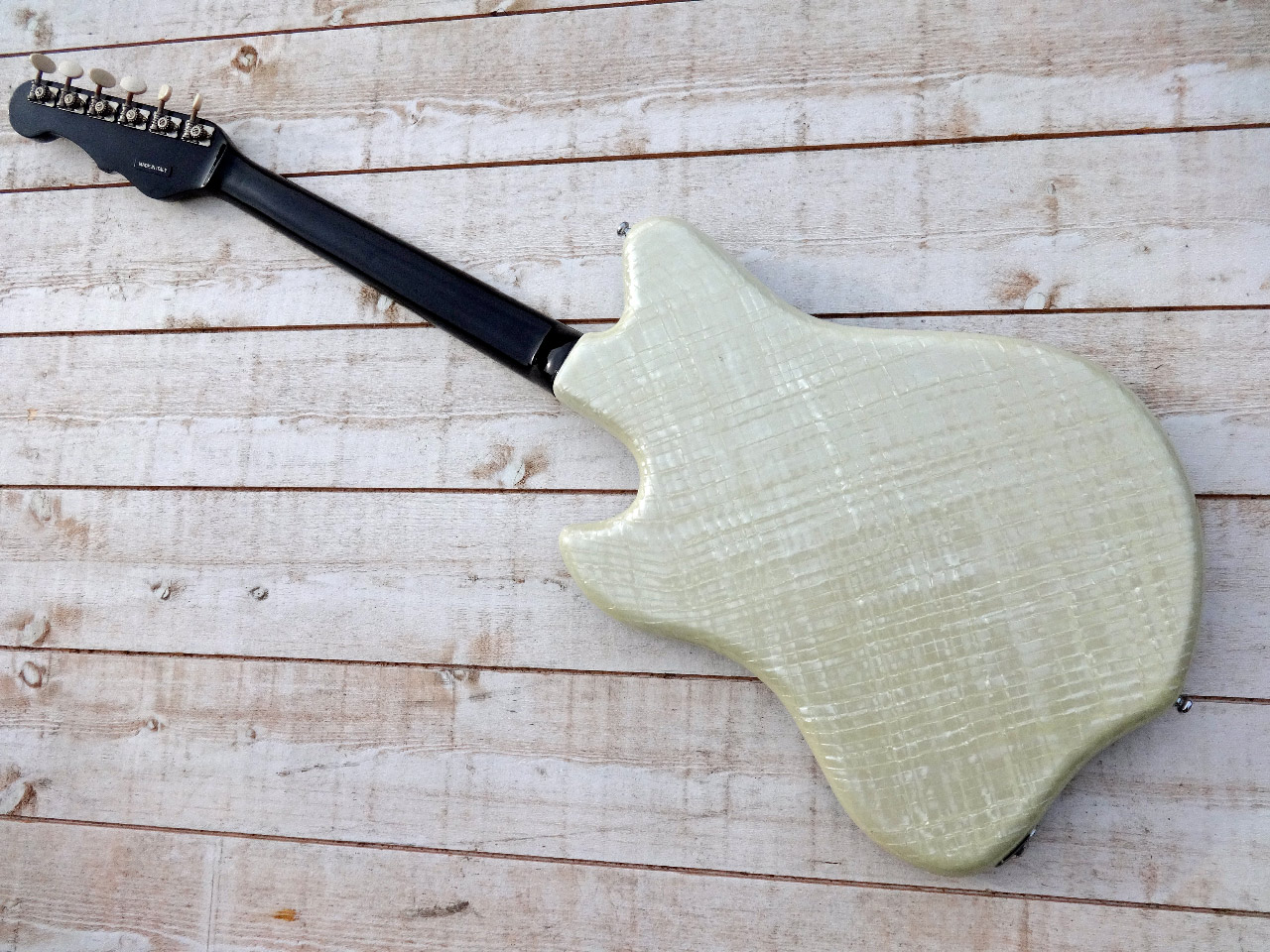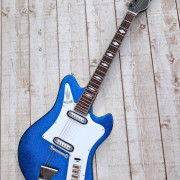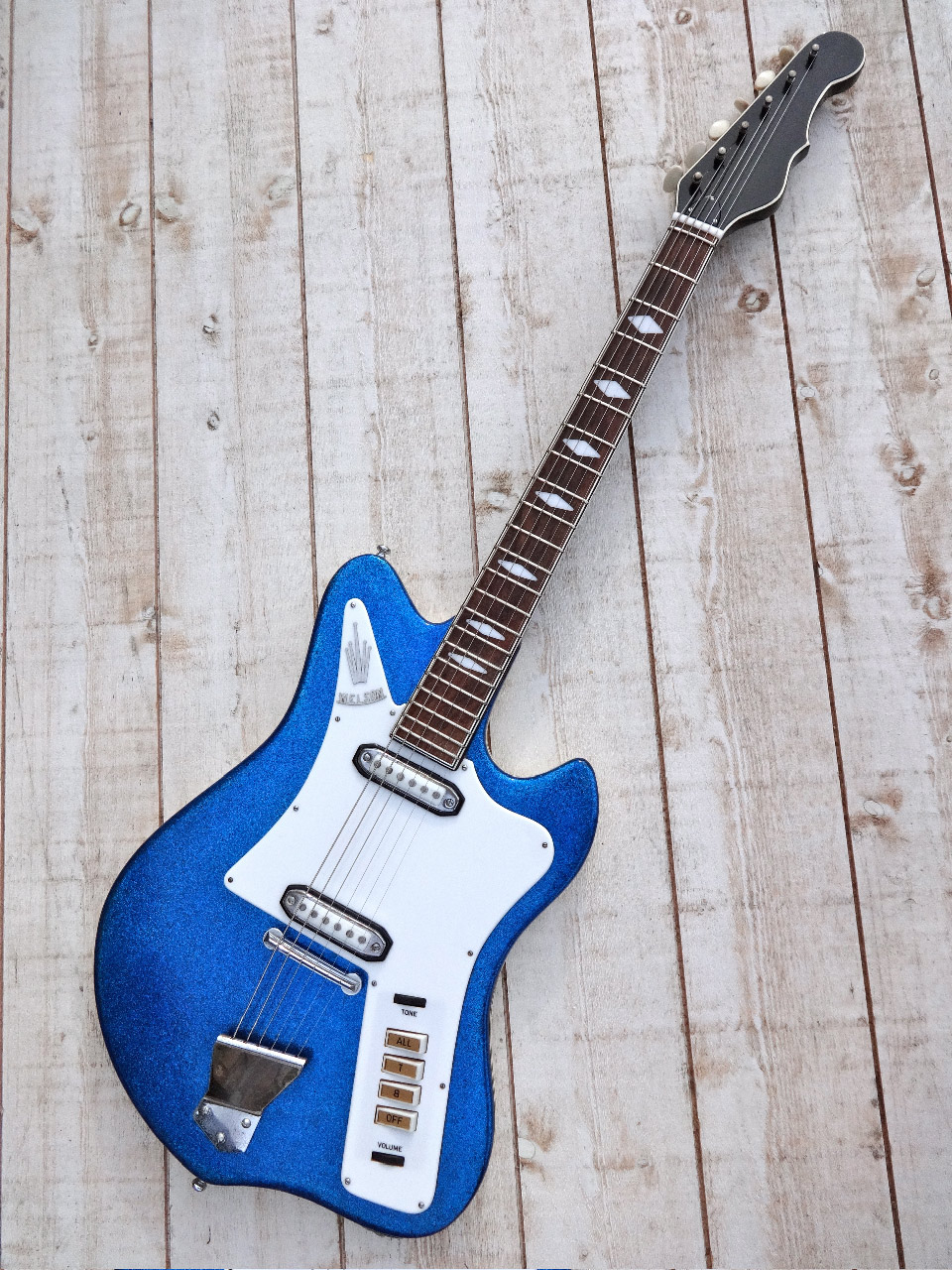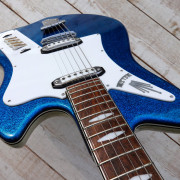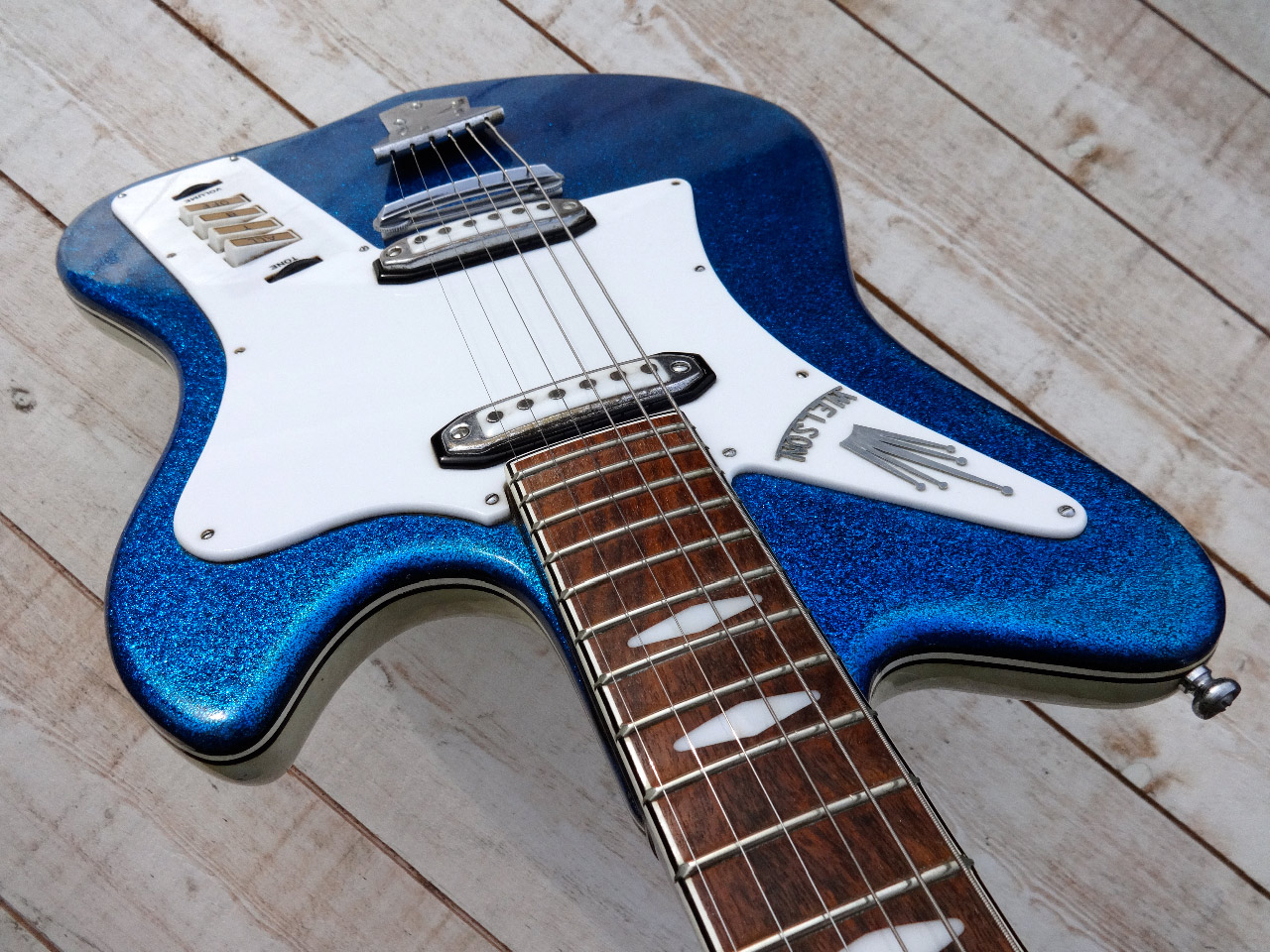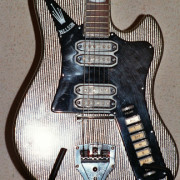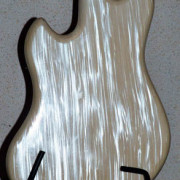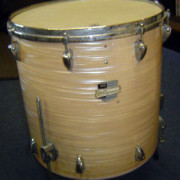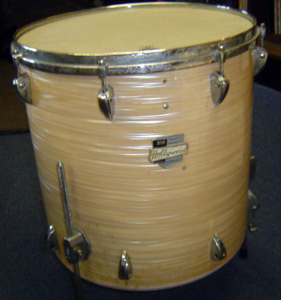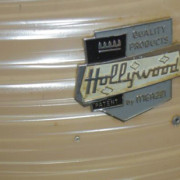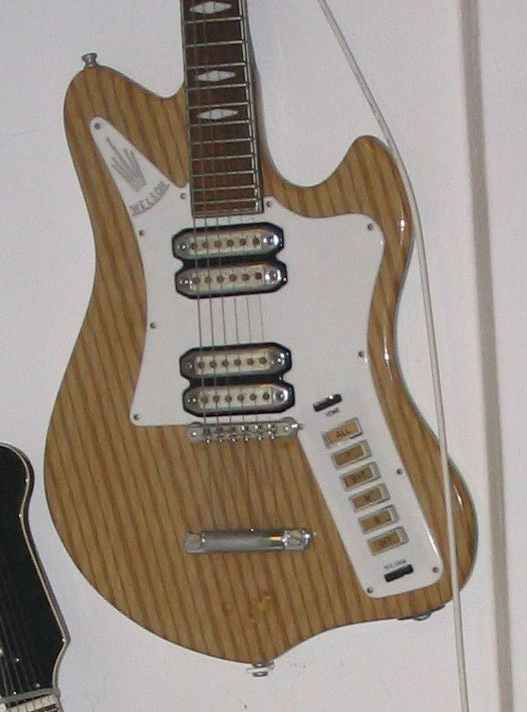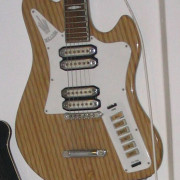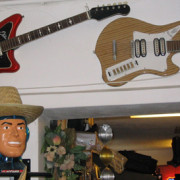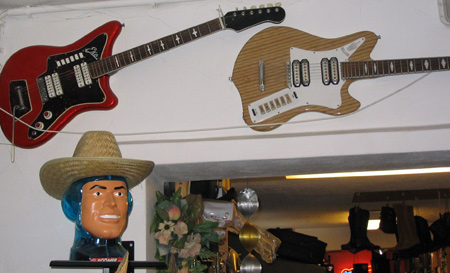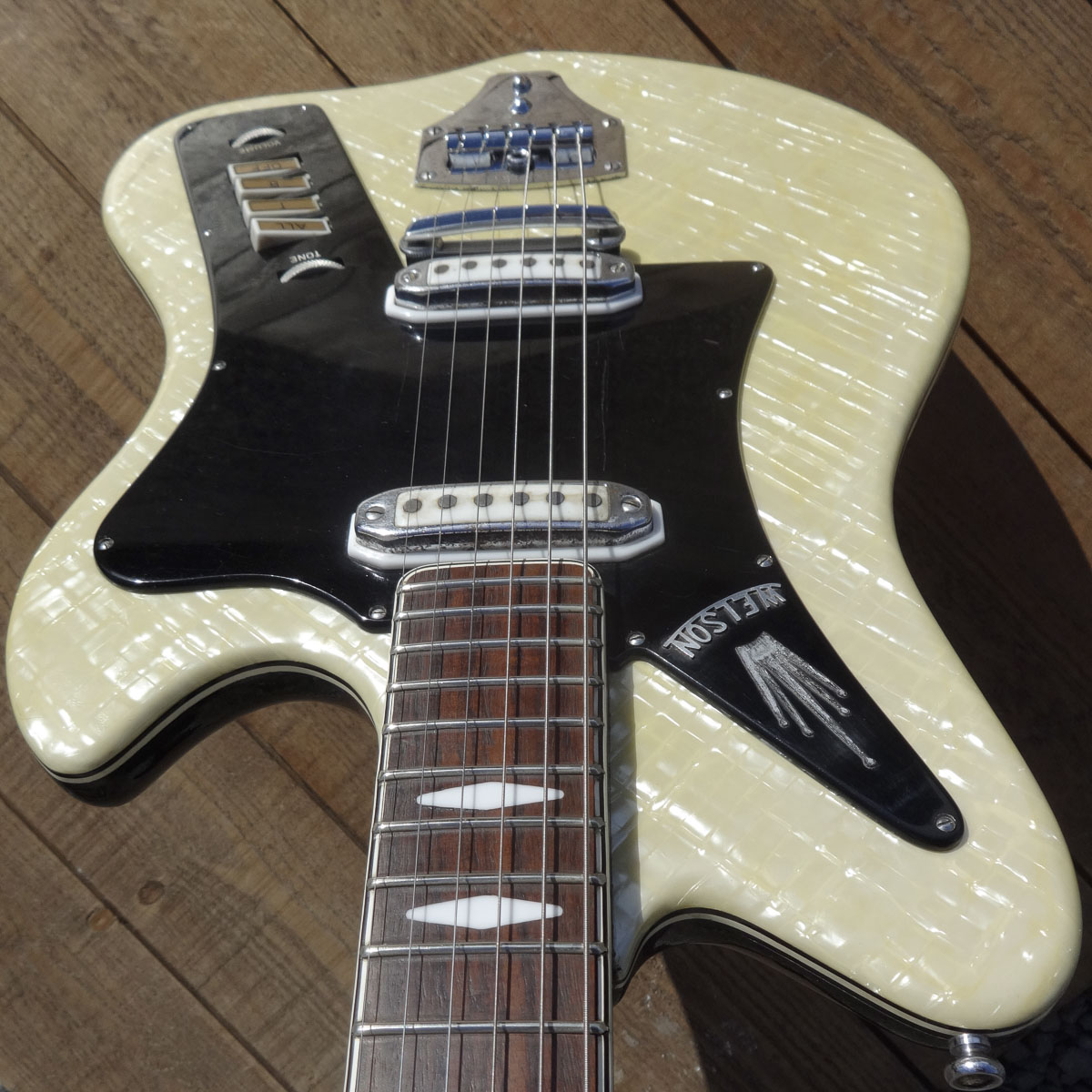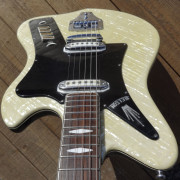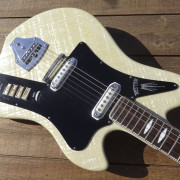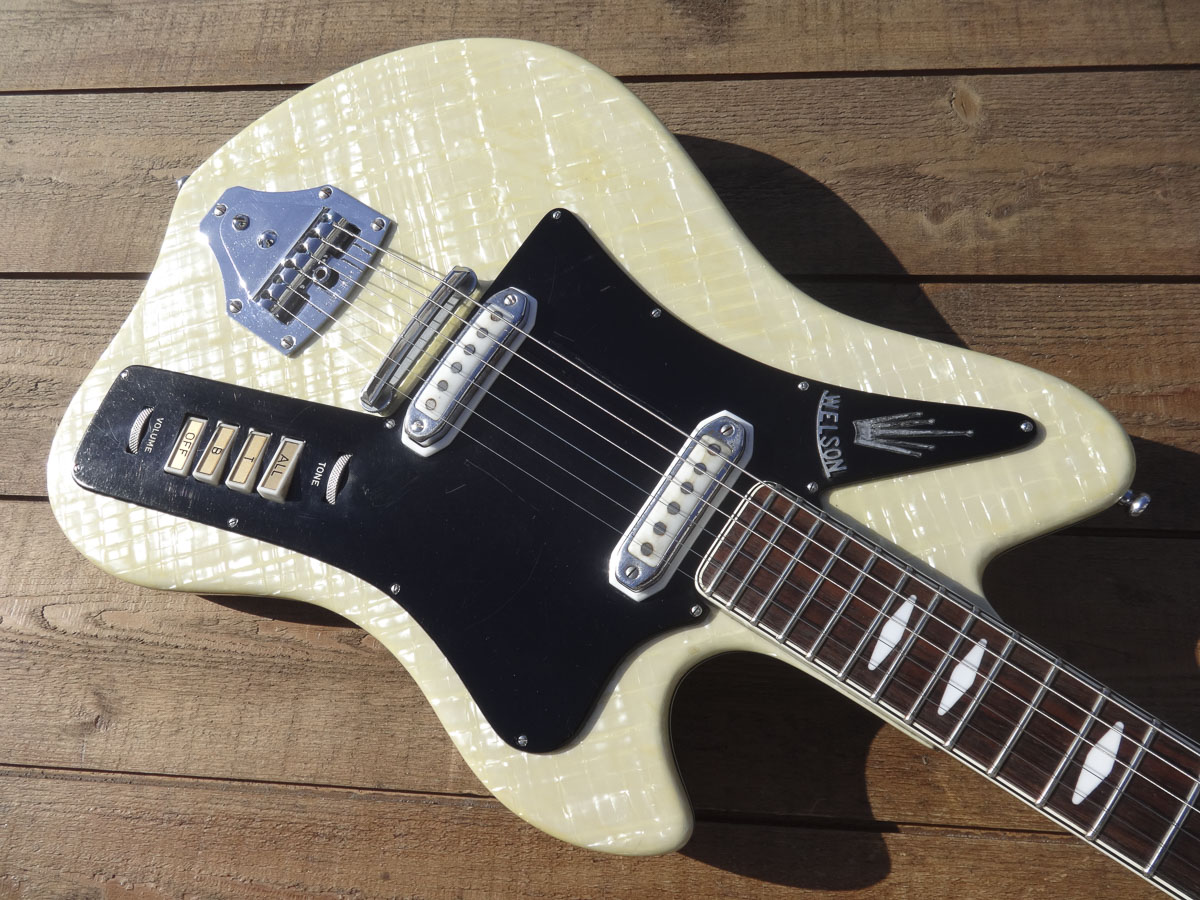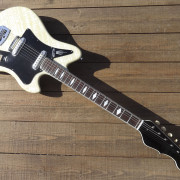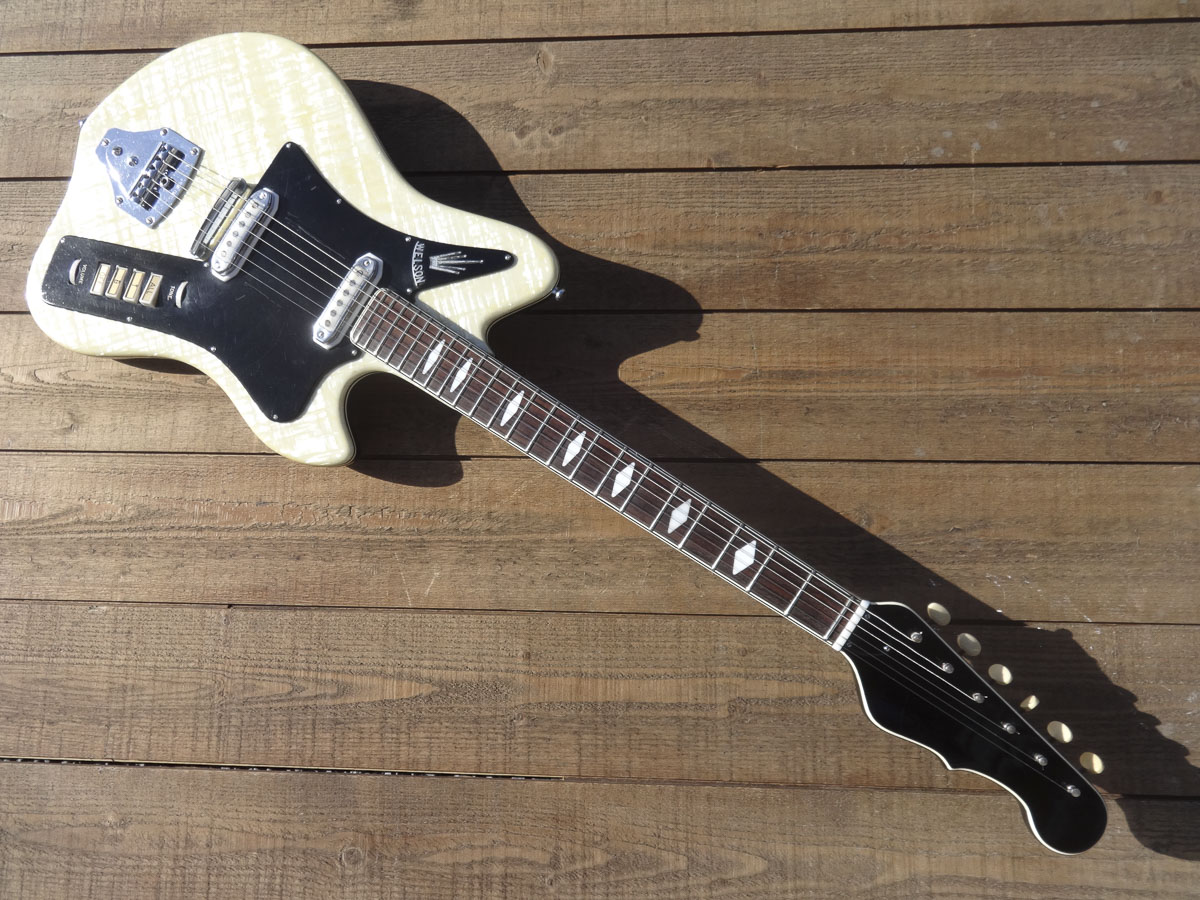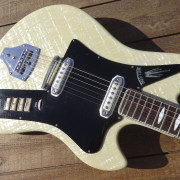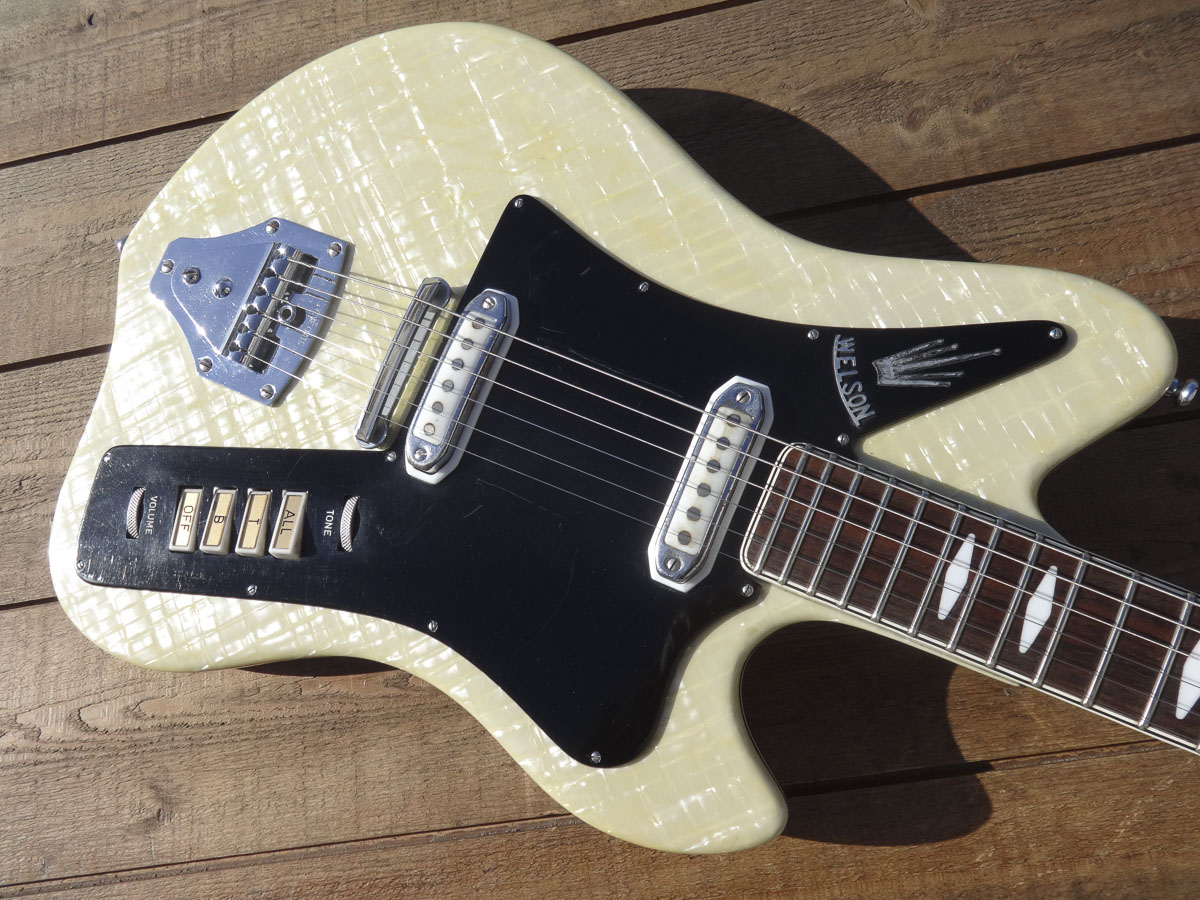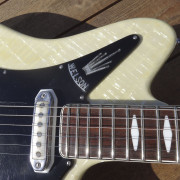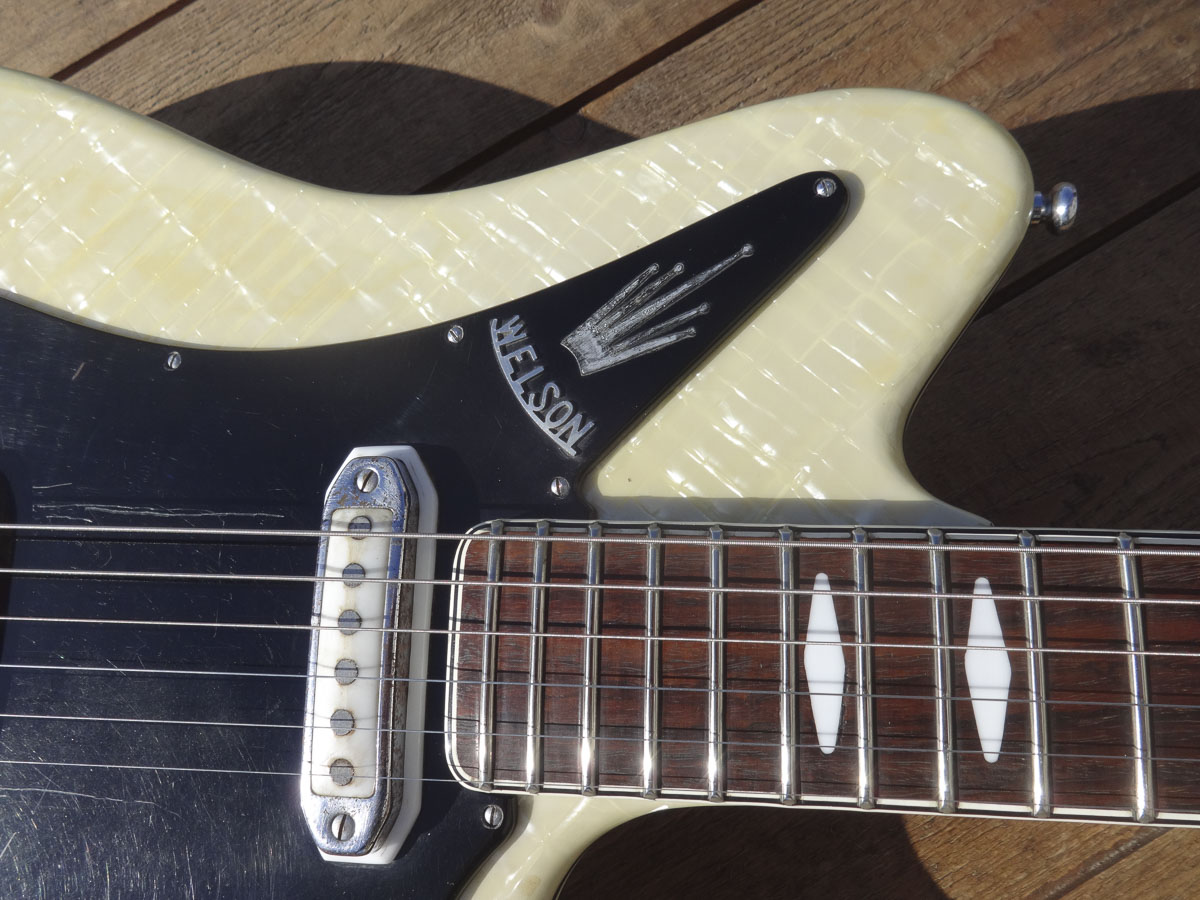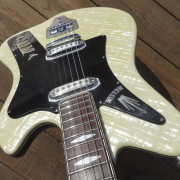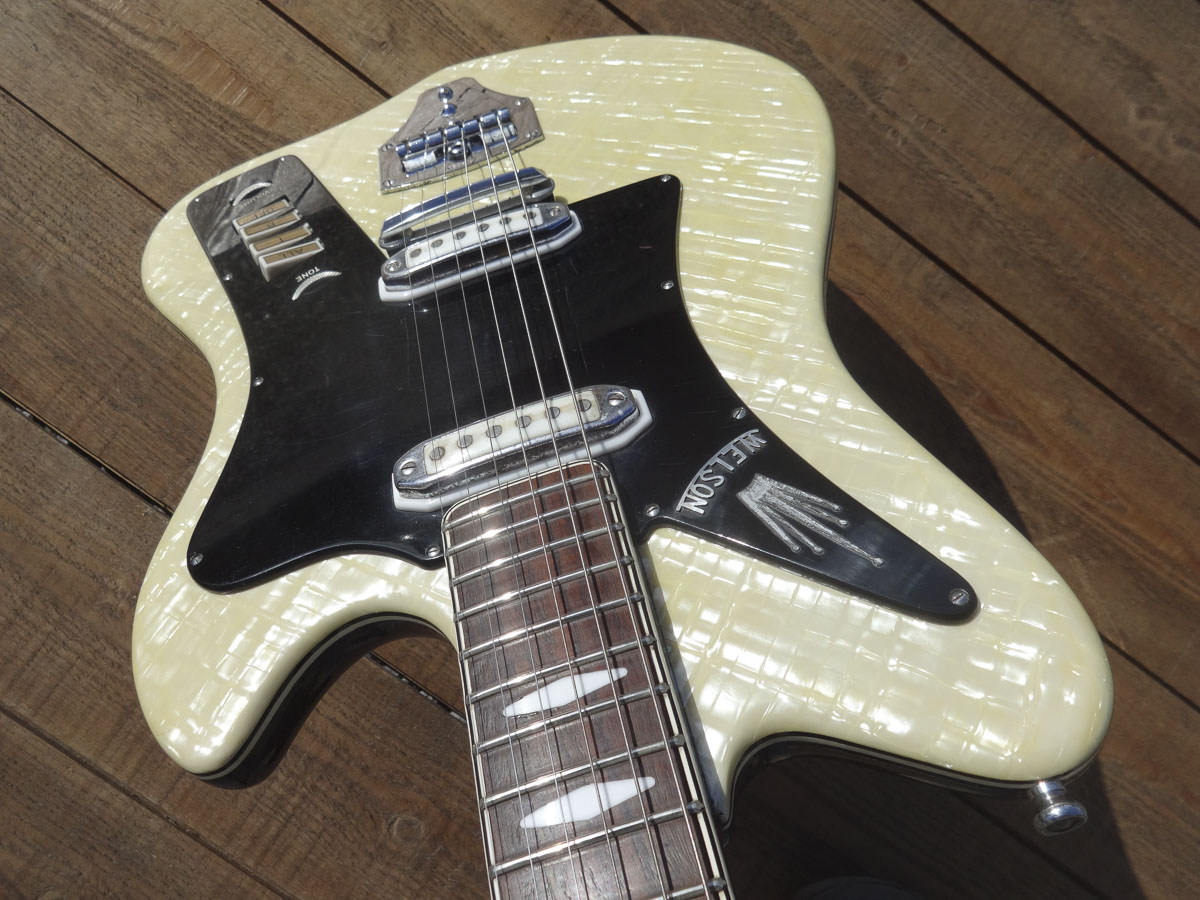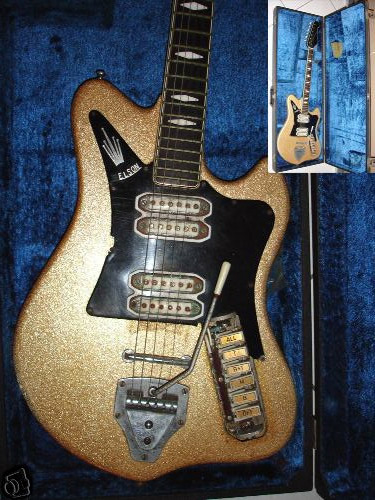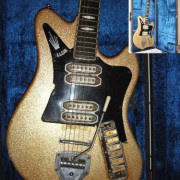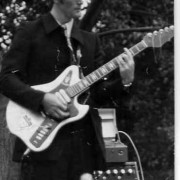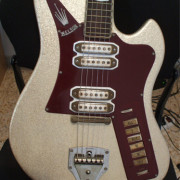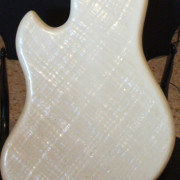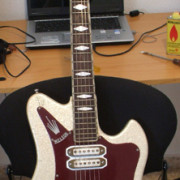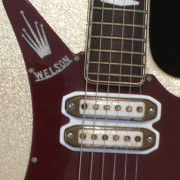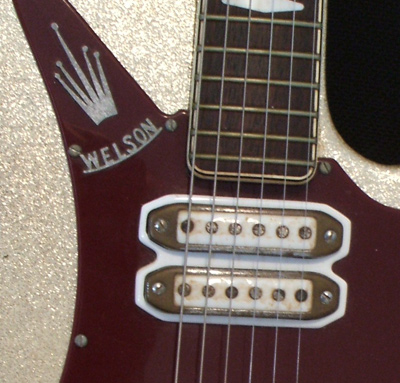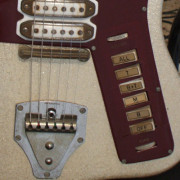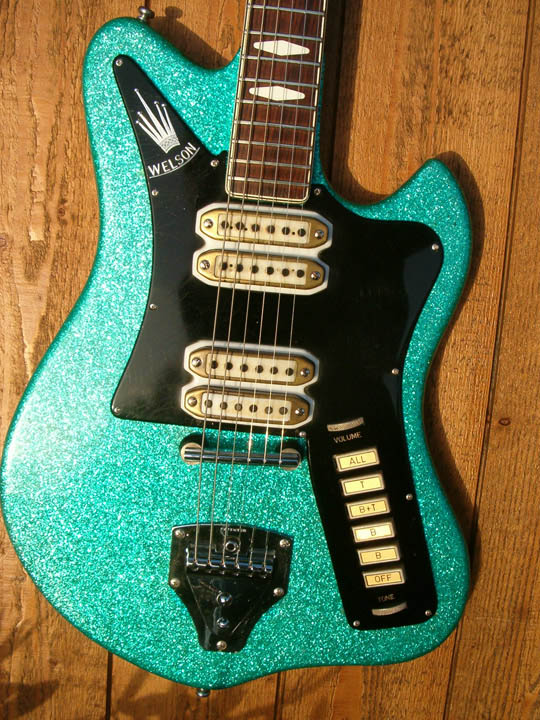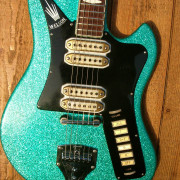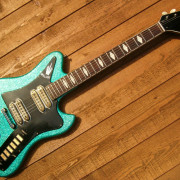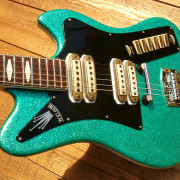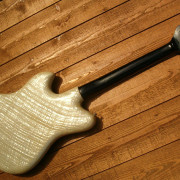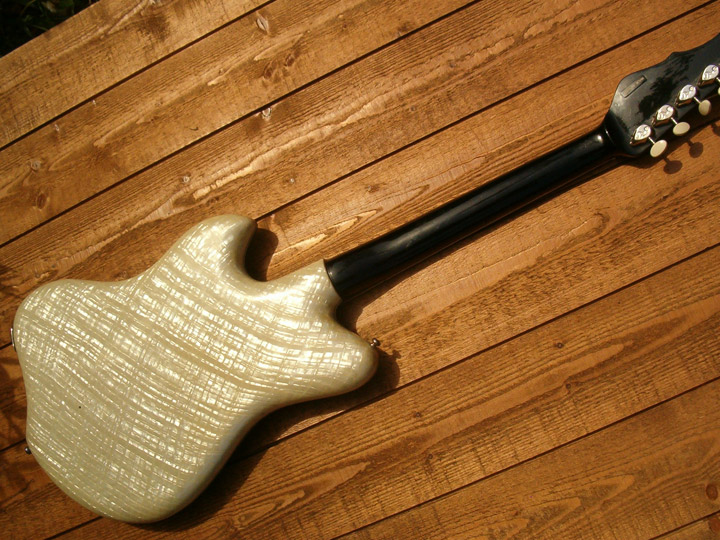Early Welson Solid-Bodied Guitars mid 62
by Jack Marchal
Welson earliest solid-bodies are awfully rare. How did the famous vintage guitar experts of Musikkeller in Dorsten, Germany, manage to have in their inventory two examples from this generation at the same time, we don’t know!
The single-coil pickups are the same mounted previously on the last Eko 400 and then on the very first Crucianelli Elite guitars, with slightly different chrome surrounds. It was of common practice in the Castelfidardo district that when the original industrial user didn’t need some component anymore, the exclusive supply contract was quickly handed over to some competitor (which explains why no new-old-stock part has survived in the area, leftovers have found a use till the last). Pickups with a black plastic casing are probably the oldest.
The finishes are still almost conventional compared to those to come. Eko also frequently used silver sparkle and the so-called ‘hazelnut stripes’ . For the latter Welson displays its touch of originality with the stripes being slightly at an angle with the axe’s axis.
Italiano
Le primissime Welson elettriche sono terribilmente rare. Ci domandiamo come hanno fatto i famosi esperti in chitarre vintage di Musikkeller (a Dorsten, Germania) per averne simultaneamente due di questa generazione in magazzino!
I pickups sono gli stessi montati sulle ultime Eko 400 e le primissime Crucianelli Elite, con cornici cromate leggermente diverse. Era pratica comune a Castelfidardo che quando qualche componente non era più usato dall’utente industriale originale, il contratto di fornitura esclusiva andava subito trasmesso ad un altro cliente (il che spiega che nessun componente originale è sopravissuto nella zona, alla fine non è rimasto nulla delle eccedenze di magazzino). I pickups ricoperti di plastica nera sono probabilmente i più vecchi.
Le rifiniture sono ancora quasi classiche di fronte a quelle che verranno poi. Anche la Eko usava comunemente a quell’epoca l’argento e il cosidetto ‘nocciola rigato’. Per quest’ultimo Welson rivela però il proprio tocco di originalità con le righe leggermente oblique rispetto all’asse dello strumento.
